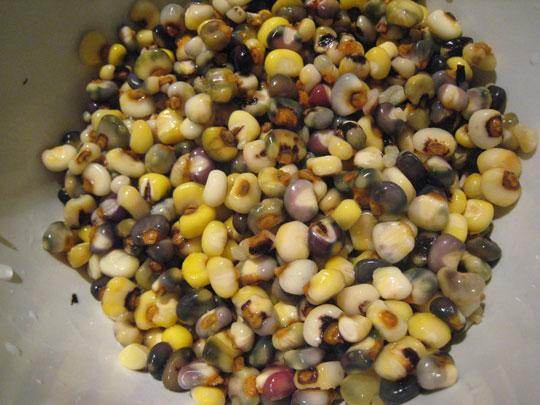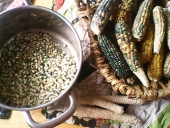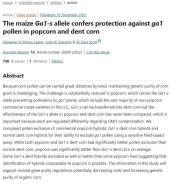
 1
1




"We're all just walking each other home." -Ram Dass
"Be a lamp, or a lifeboat, or a ladder."-Rumi
"It's all one song!" -Neil Young
 2
2





Peace to you




Trevor Walker wrote:Mmmm, hominy - what a great way to use dry corn.
Another thing besides grits that southerners do with corn and most other folks don't understand.
Do you have a recipe or directions?
I'm unfamiliar with the process but this piques my interest, as I sure like eating it. Hope to have a little dry corn to try it on next fall.
"We're all just walking each other home." -Ram Dass
"Be a lamp, or a lifeboat, or a ladder."-Rumi
"It's all one song!" -Neil Young
 2
2





Peace to you

 2
2




Owner, Etta Place Cider

 5
5








 I'm trying your recipe/version right now...lime/corn and water on to boil. My slow cooker is just that, very slow......so I never got the lime water and corn to an initial boil, but that is what that recipe said to do. In the end my corn was over cooked and most of the kernels still had skin. Looking forward to a successful batch this time.
I'm trying your recipe/version right now...lime/corn and water on to boil. My slow cooker is just that, very slow......so I never got the lime water and corn to an initial boil, but that is what that recipe said to do. In the end my corn was over cooked and most of the kernels still had skin. Looking forward to a successful batch this time.
"We're all just walking each other home." -Ram Dass
"Be a lamp, or a lifeboat, or a ladder."-Rumi
"It's all one song!" -Neil Young
 3
3




 1
1




"We're all just walking each other home." -Ram Dass
"Be a lamp, or a lifeboat, or a ladder."-Rumi
"It's all one song!" -Neil Young
 1
1




Joseph Lofthouse wrote:
To make tortillas, finely grind the freshly nixtamalized corn adding water as needed.
To make tamales, coarsely grind the fresh nixtamal.
To make masa harina, dry the corn, and then grind it to a fine powder.
Posole can be made from either fresh or dried nixtamal.
 1
1




 2
2








With appropriate microbes, minerals and organic matter, there is no need for pesticides or herbicides.
 1
1





|
I have never sensed the force being as strong as in this tiny ad:
Learn Permaculture through a little hard work
https://wheaton-labs.com/bootcamp
|



